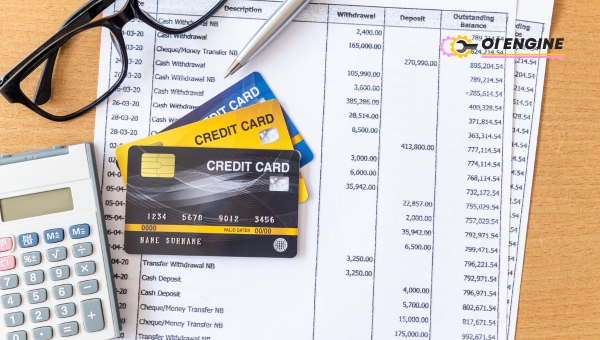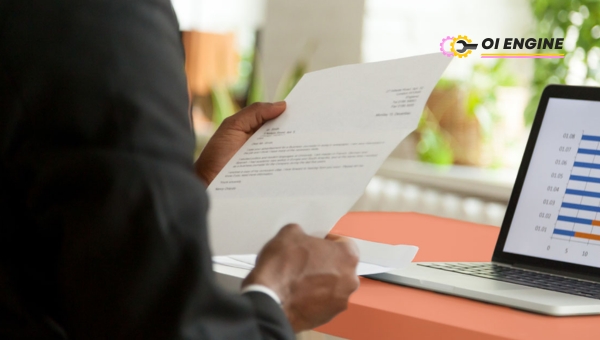Ever been at a point where you need to write a Debt Collection Letter, but just aren’t sure how to communicate assertively without sounding too harsh? Well, you’re not alone, and it’s indeed tricky!
Most people encounter the same obstacle when it comes to crafting effective debtor communication. But what if there was a way to change this uneasy situation into an opportunity? A chance to enhance your business relationship while also ensuring timely payments?
In simplest terms, a Debt Collection Letter is a notification dispatched by a creditor. It is designed to remind their debtor about the overdue payment or outstanding debt that has crossed their due date.
When written methodically, these letters help maintain beneficial business relations and can expedite receiving your pending dues.
Understanding a Debt Collection Letter
When I think about the complexities of running a business, one often overlooked aspect is the sphere of unpaid invoices.

On that front, knowing how to navigate a debt collection letter can remarkably ease this burden.
What is a Debt Collection Letter?
A debt collection letter, in its most basic definition, is precisely what it sounds like – a letter that seeks to recover owed amounts that haven’t been paid. It’s an essential tool used by businesses and creditors to demand payment from customers or clients who are overdue on their accounts.
Depending on the nature of the delayed payment and relationship with the debtor, there could be varying degrees of seriousness in these letters – some being friendly reminders, while others serve as formal notices.
Now you might wonder – how does such a letter look? Well typically, it clearly outlines outstanding debts with as much detail as possible including things like invoice numbers or service dates. Plus it’ll also specify timelines by when you’re expected to clear these dues.
On the surface level, it might seem just about money recovery, but from my viewpoint, it’s more than that! It‘s also about maintaining trustworthy relations and nurturing them through open communication.
The Importance of Drafting A Collection Letter
In today’s fast-paced world where managing smooth business relationships is crucial for success; developing well-crafted collection letters becomes increasingly important for several reasons:
- Fostering Good Business Relations: It’s a delicate balance between asking for due payments and preserving mutual respect. A debt collection letter allows me to fulfill my financial needs without severing the thriving relationship I enjoy with my customers.
- Clear Communication: Offering detailed specifics about pending dues in my letters, brings clarity and transparency into our interactions.
- Professional Image Maintenance: By establishing clear expectations for due payments, I demonstrate a level of professional seriousness that reinforces the image of my business. This makes it more likely that customers will consider their obligations towards me earnestly.
- Legal Safeguard: And lastly yet very importantly, should old-fashioned gentle persuasion not work out, these letters also serve as legal proof that I attempted to collect debts formally.
Crafting such letters isn’t just about my business protection – rather they create a well-functioning communication line with those who owe money to you.
And believe me when I say this, ongoing communication does wonders in resolving payment issues promptly and amicably! So, having these letters done right contributes positively both to your cash flows and long-standing client associations.
Also Read: Pandemic E-commerce Surge Rocketed Truckers Demand!
What are the Steps to Draft an Ideal Debt Collection Letter?
Writing a debt collection letter might seem like a daunting task, but when you break it down into steps, it gets easier to manage.

A good debt collection letter needs to strike a balance: it must be strong enough to signal the gravity of the situation, but sensitive enough not to alienate the debtor and prompt them against taking necessary action. Below are the key steps involved in drafting an ideal debt collection letter.
Key Elements in Drafting Collection Letters
There are vital elements that every effective debt collection letter should include. This information is important because it communicates all the essential details needed by debtors:
- Debtor’s Information: Your letter should mention the name and contact details of the debtor. This establishes who you’re addressing and ensures there’s no mix-up.
- Outstanding Amount: Clearly state how much money is owed by mentioning specific details like invoice numbers or other relevant identifiers related to your agreement.
- Payment Deadline: Your collection letter must mention a clear deadline for repayment of debts. This adds urgency without being aggressive.
- Consequences of Non-payment: Lay out what would happen if payments aren’t made on time. Ensure that there are legally-backed consequences in place (like interest increases or reporting to credit bureaus).
- Contact Details: Lastly, provide your contact details so they can get back with queries or concerns.
Keeping a Respectful Tone While Drafting A Collection Letter
Keeping a respectful tone while drafting a collection letter often proves challenging for many people, but we must remember that everyone can face financial difficulties:
- Start with Courtesy: Begin your letters by addressing readers respectfully – don’t ever forget please’ and ‘thank you’.
- Communicate Empathy: We never know someone’s situation; reflecting understanding empowers indebted individuals toward resolution rather than reposting barriers with aggressive tones.
- Stay Professional: Despite being empathetic, remember not to get personally involved with your debtor’s situation. You’re writing a debt collection letter as a business document and it should stay that way.
- Offer Assistance: If possible, offer assistance or payment solutions that can help the debtor in repaying their amount. This might include offering partial payments or creating a payment plan.
By keeping these key components in mind while drafting your debt collection letter, you will produce an effective, firm yet respectful communication, likely to receive better response rates.
Also Read: What is Double-Entry Bookkeeping In Accounting?
What are the different Types Of Debt Collection Letters?
As I navigate my way through the world of debt collection, understanding the different types of debt collection letters becomes invaluable.
These letters serve as one big tool in the arsenal and as an effective means to delicately handle one’s finances. There are primarily two types that we will talk about – reminder letters and formal notice letters.
Reminder Letters
At its core, a reminder letter is gentle and meant to nudge someone towards fulfilling their financial obligation.
It’s not assertive or pressing but simply serves as a cordial note to remind them of their due amount awaiting payment.
This type of Debt Collection Letter plays a crucial role in maintaining harmony between lender and borrower as it demonstrates consideration towards the debtor’s situation.
- Polite Nature: Reminder letters carry less severity than other forms of collection communication – they are polite, friendly, and typically non-demanding.
- Acknowledges Delays: This letter acknowledges that delays can occur, trying to pull back those who may have forgotten or missed out on their payment schedule.
- Early-stage recovery method: Typically, these are used early on in the recovery process before any stern action is taken.
Forming positive relations with your borrowers paves for better response rates while adding an empathetic tone turns this into an opportunity for open dialogue about repayments.
Formal Notice Letters
Moving up a notch on assertiveness is our second type – Formal Notice Letters. Please don’t confuse them with reminder letters; they perform a different function within this ecosystem. A formal notice letter is delivered when previous polite reminders have been ignored repeatedly by the debtor.
- Assertive Tone: Compared to reminder letters’ soft tone, these tend to be more formal and demanding.
- Payment Request: They explicitly request payment covering all details about the owed amount
Including terms if debts remain unpaid– potential legal actions or further steps that would need acting upon. - Legal Consequences: This is a step before legal action is being undertaken, hence carrying more weight.
Through formal notice letters, the debtor gets a clear understanding of the seriousness of their situation and the consequences if continue to avoid paying. However, these letters maintain decorum ensuring no violation of rights or threat toward the debtor.
Working with Professional Agencies for Drafting Collection Letters
When I first realized the importance of a debt collection letter, my immediate thought was how crucial it is to get them just right.

As much as crafting these letters is an art, it often requires professionalism and expertise to effectively inspire action.
A worthwhile solution can be hiring professional agencies that specialize in drafting collection letters. These professional firms come with a plethora of advantages yet also carry their own set of limitations.
Advantages of Hiring Debt Collections Agencies
Hiring debt collection agencies can take a considerable load off your shoulders by managing this part of the business for you.
They can offer valuable services to make your path towards successful debt recovery smoother.
- Access to legal resources: These agencies operate in compliance with laws such as the Fair Debt Collection Practices Act (FDCPA) and are acquainted with permissible modes of communication, specific verbiage, or practices prohibited by law.
- Persistent follow-up: Through regular follow-ups via reminder calls or debt collection letters, they ensure persistent efforts on their end.
- Expertise and professionalism: By utilizing professionals’ skills when it comes to collecting debts on time, businesses stand a better chance of recovering owed money without straining relationships.
- Save Time and Resource: Their services save valuable time and resources that business owners could use elsewhere, thereby increasing operational efficiency.
- Full-service support: From negotiating payment plans based on the debtor’s ability to pay to handle potential litigation cases if required- these agencies provide end-to-end support.
However beneficial these agencies might be they don’t come without their limitations.
Limitations with Debt Collections Agencies
While hiring professional agencies undoubtedly sounds promising there are certain aspects you need to keep in mind before opting for one.
- Loss of personal touch: Since tackling delinquency directly may heighten strain between the two parties involved; however, it could also mean maintaining the debtor’s loyalty in the long run which is generally less likely with agencies.
- Potential high costs: Debt collection agencies charge a commission on collected money, and the rates can sometimes be high.
- Communication breakdown: There are chances of communication lapses or misunderstandings between an agency and your company leading to wrongful representation.
- Negative impact on customer relationship: There’s always a risk that harsh collection methods used by some agencies might leave a negative impact on customers leading to potential loss of future business.
- Agency reputation affects: How these firms handle debtors can reflect on your credibility as well.
Being cautious about these pros and cons should help you make an informed decision about using professional agencies for drafting debt collection letters. They offer valuable assistance but may not necessarily cater to everyone’s unique needs finely.
Also Read: 15 Best-Paying Industries for Truckers to Consider
Crafting The Most Useful Collections Letters
In dealing with the nitty-gritty of running a business, I have noticed how challenging it can be to recover debts. However, one solution that has worked for me is crafting useful collection letters.

Done right, a collection letter serves as a formal reminder for a debtor about their outstanding obligation. It’s not just some ordinary communication medium – it’s an important tool to get what’s due back to your business handle. Below are steps I’ve found effective in making the most out of these letters.
Strengthen your Demand Through Effective Communication
Good communication is powerful, and this holds even in drafting debt collection letters. The way you express your demand affects if and when you’ll obtain payment from debtors.
Delivering well-structured, professional, and considerate messages can encourage quicker repayments.
- Be Clear About the Outstanding Debt: One key step towards receiving quick repayment is clarity about the debt owed. Clearly state what they owe and why they owe it, which includes mentioning any previous correspondence or agreements regarding this debt.
- Specify Payment Deadlines: Setting out deadlines within which payment needs to be made dispels ambiguity and prompts action.
- Describe Possible Consequences: If you mention specific implications like potential legal action or impact on credit scores, customers predisposed to settle debts will likely do so promptly.
- Offer Multiple Repayment Options: Providing various methods for repayment such as online transfers or bank deposits may make repayment more convenient for debtors.
- Maintain Polite Words: While collections letters inherently demand money from someone else – something that may generate discomfort – keep in mind that being polite can never hurt! This gesture maintains mutual respect between the parties involved.
By focusing on these points when drafting my demands through collection letters, I believe anyone can foster effective communication with clients who are bound by debts thus driving faster repayments, which ultimately is good for any business.
FAQs
What is a debt collection letter?
A debt collection letter is a notice sent by a creditor or debt collection agency to the debtor, reminding them of their outstanding loan. Its purpose is to seek repayment for the outstanding dues in a certain time frame.
How do I write a debt collection notice?
Writing an effective debt collection notice involves outlining the amount due, and setting out clear instructions on how and when to pay, including any relevant reference numbers or account information. Most importantly, it must remain professional and understanding of the debtor’s situation.
Should I respond to a debt collection letter?
Yes, it’s very crucial to respond to every communication about your debt – whether you believe you owe money or not. By responding, one can prevent any misunderstanding or inaccuracy related to issues.
What is proof of debt?
Proof of Debt refers to evidence that validates the existence and the amount of indebtedness claimed. It usually includes details about who owns the debt, as well as transaction records for establishing its legitimacy.
What is a Debt Collection Process?
The Debt Collection process starts with amicable reminders through emails or calls from creditors asking for repayment. If met with non-compliance or negligence from the borrower’s end, it escalates into formal notices till finally resulting in legal proceedings if needed.
Also Read: US States With The Most Bridges: Which State Leads The Pack?
Conclusion
A Debt Collection Letter is not just a reminder about an overdue payment; it’s a crucial tool in sustaining valuable business relationships.
Drafting it carefully keeps communication lines open with due respect for the debtor’s situation. The process involves understanding the vital elements needed, maintaining a proper tone, and knowing when to escalate a friendly reminder into a more serious formal notice.
Writing perfect collection letters can often be challenging and time-consuming. Hence, working with professional agencies can be beneficial.
They persistently follow up and provide legal help when necessary, but one must keep in mind possible drawbacks such as high costs or impersonality. So investing time in crafting efficient letters could lead to better debt recovery rates.
